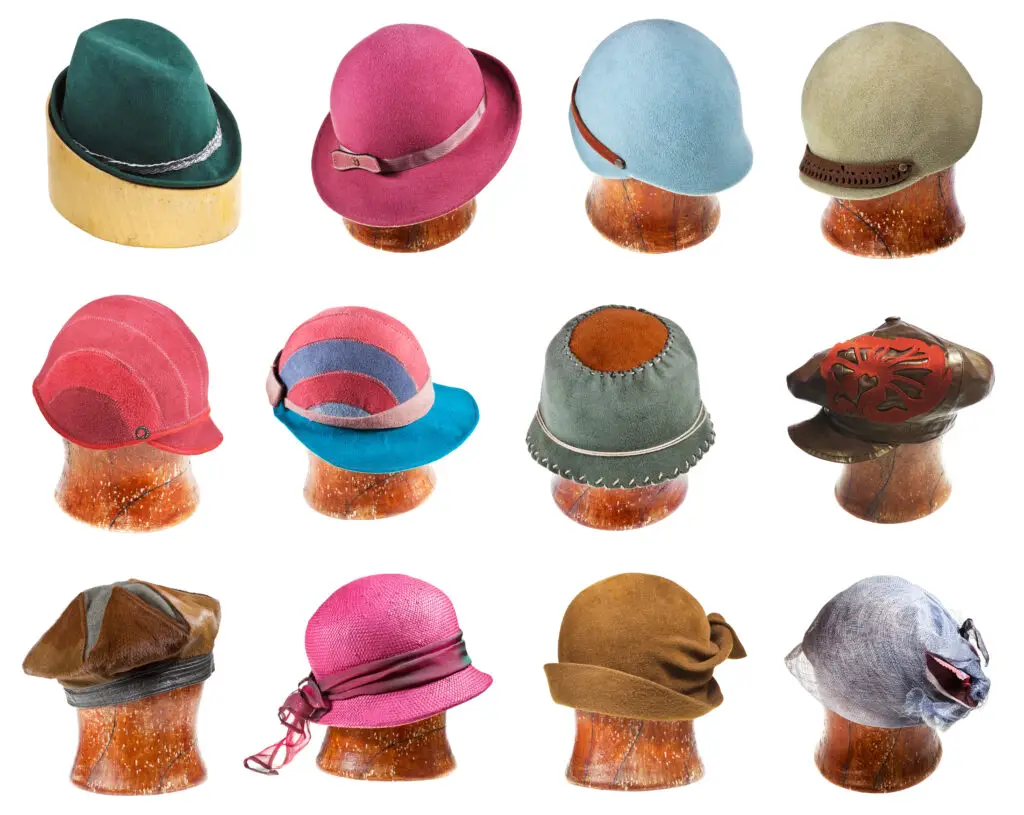
Few fashion items say more about us than hats. They’re also great things to make for practical reasons, to keep out the cold or shade us from the sun. Beginners to sewing often shy away from them, thinking they must be far too difficult. Whilst some types of hats do require professional expertise and experience, there are others you can make at home using familiar sewing materials.
Sizing and Shaping
If you are making a floppy hat, shaping is easy, but you will still need to know the size of the head you’re making it for. Measure around the head just above the ears. This will tell you the size of the hatband,
The hatband is a starting point common to many types of hats. It is sometimes elasticated, or has an elasticated section at the back, as on baseball caps, but in most cases, it should be rigid so that the hat sits neatly on the head without stretching. The width of the band will depend on the style you’re aiming for but should be at least one inch. It’s a good idea to start by making hatbands from scrap material and trying them on before you begin a serious project.
For domed hats, you will need an appropriately sized hat block. This is a domed piece of wood or metal over which you can pin your fabric. You can order hat blocks online or make your own if you have basic carpentry skills. Bear in mind that colour sometimes seeps out of the wood into the fabric, so if you have a wooden hat block it’s a good idea to coat it with plastic.
An alternative way to shape a hat is to build a wireframe. This won’t give you such an even finish, at least on the inside, but with many types of hats, you can conceal the imperfections by adding decorations. If you do use wire, look for cotton-coated wire which will provide some friction against your fabric and not slip out of place too easily.
Hat Fabrics
Hats can be made from a variety of fabrics but by far the most popular is felt. You can use felt to make an attractive wedding hat, top hat or bowler, or you can choose a different fabric such as satin or brushed cotton and line it with felt to give it strength and firmness.
If you try to pull dry felt into shape, you’ll find that it easily tears. However, if you steam felt, you can press it into the shape you want and it will curve and dry appropriately. You can do this using a steam iron or a vegetable steamer, or by placing it in a microwave on a medium setting for one minute, along with a small container of water.
Felt can take several days to dry, but you can help it on its way by placing it in an airing cupboard or in the sun. As it dries it will shrink, so make sure you secure it firmly in place (use pins if you’re working with a wooden hat block) or you’ll end up with a much smaller hat than you had planned!
If you’re using felt on its own, a shoe brush can be helpful for smoothing the fibres in the same direction after it’s dried, giving it a much neater appearance.
Hat Brims
The easiest way to make the brim of a hat is simply to cut out a large oval of fabric and make a hole in the centre about half the size of the hole at the centre of your hat band or the dome of your hat. Fit the band or dome over it and draw a chalk line to indicate where it comes to. You can then make small slits in the inner part of your oval, reaching almost all the way to this line, and fold up the inner part of the fabric so it can be secured to the inside of the band or dome.
It’s always tempting to use glue to secure the brim and this will give you the neatest look immediately after you do it. However, glues can seep into the fabric and stain it, especially when they get warm; there’s also a risk that, in really hot weather, the hat will fall apart.
For this reason, it’s much better to hand-sew the brim to the rest of the hat. Use a strong, smooth thread and a double row of stitches. Afterwards, you can use a ribbon to hide the stitches and, if you want, a bow or other decoration to make the ends of the ribbon look neat.
